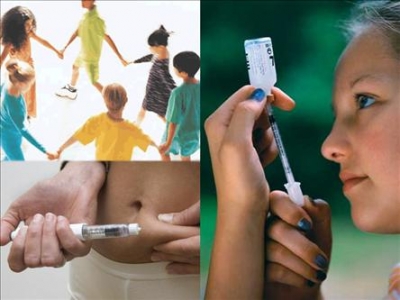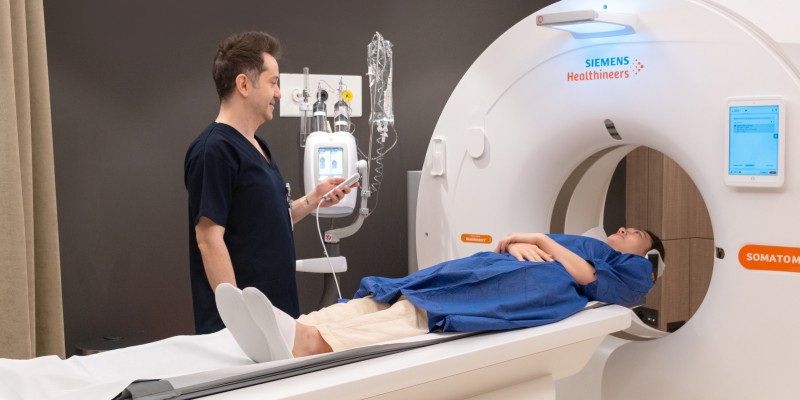
What is Type 1 diabetes?
Type 1 diabetes is a disease that occurs as a result of insulin deficiency and progresses with an increase in blood sugar (glucose). Insulin is a hormone secreted from the pancreas in our body and enables the use of sugar in the blood by the body cells. Normally, the cells in our body provide the energy necessary to maintain their lives and duties by using the sugar in the blood as fuel. Just as a car cannot run without sufficient fuel, cells cannot perform their duties if they cannot use sugar. Carbohydrates from food are converted into simple sugars in the intestines before being absorbed and mixed into the blood.When blood sugar starts to rise after feeding, insulin secretion from the pancreas increases in people who do not have diabetes, and as a result, the sugar that passes into the blood is used or stored by the cells. In diabetics, since the insulin secretion is insufficient, the sugar that passes from the intestines to the blood cannot be used by the cells, and blood sugar rises. In healthy people, during feeding or fasting, the body adjusts the amount of insulin released according to the sugar level in the blood, ensuring that blood sugar remains within normal limits. However, in a child with diabetes, blood sugar is constantly high because the pancreas cannot produce insulin, and it rises even more after feeding.
What Causes Type 1 Diabetes?
Diabetes develops as a result of the destruction of the insulin-producing cells of the pancreas as a result of various environmental and structural reasons. When insulin cannot be produced enough, the sugar in the blood is taken up and used by the cells, and unused sugar accumulates in the blood, causing blood sugar to rise. A rise in blood sugar above normal is called hyperglycemia. Normally, in people who do not have diabetes, the blood sugar level is between 70 and 110 mg/dl. Blood sugar levels in diabetics far exceed these limits. When blood sugar rises above 170-180 mg/dl, some of the sugar in the blood passes into the urine, and sugar begins to appear in the urine. The color change on the urine test stick indicates the presence of sugar in the urine. When the amount of sugar in the urine increases, the amount of urine that the child expels also increases, since water will be excreted along with the sugar. urinates frequently or may begin to urinate at night. In order to replace this loss of water with urine, he starts to drink a lot of water. As a result, drinking a lot of water and urinating a lot starts. These are the symptoms of hyperglycemia. In children with diabetes, starving cells, as a result of the inability to use sugar in the blood as a result of an insulin deficiency, begin to break down fats and proteins in order to provide energy. As a result, weight loss occurs. In addition, during the use of fats for energy production, acidic substances called ketones are released. Ketones cause nausea and vomiting. In addition, rapid breathing begins in order to remove these acid substances from the body. Ketones are also excreted in the urine. The presence of ketones in the urine can be easily detected with a urine test stick. If there is ketone in the urine, the light color on the test strip turns a dark pink or purple. If diabetes is not diagnosed during this period and the necessary treatment is not started, the child may enter the severe state we call diabetes ketoacidosis and a coma may develop.
Symptoms of Diabetes Disease in Children:
- drinking a lot of water
- a lot of urination
- Urinary incontinence at night or getting up to urinate at night
- overeating
- inability to gain or lose weight
- Weakness, fatigue, desire to sleep
- The smell of rotten apples in the mouth
- Stomach ache
- Nausea and vomiting
- rapid breathing tion
- Urinary incontinence at night or getting up to urinate at night
- overeating
- inability to gain or lose weight
- Weakness, fatigue, desire to sleep
- The smell of rotten apples in the mouth
- Stomach ache
- Nausea and vomiting
- rapid breathing
How is type-1 diabetes treated?
A common treatment that will completely remove type 1 diabetes from the body, that is, allow the body to make its own insulin again, is not possible today. However, it is possible to reduce the blood sugar to the desired levels by giving the body the insulin it needs by external injection and to reverse the above-mentioned negative developments. Type 1 diabetes seen in children is different from type 2 diabetes seen in adults. Since the insulin production of the pancreas continues in most adult diabetics, it is possible to treat them with diet or oral diabetes medications. However, in Type 1 diabetes, this is not possible because the insulin-producing cells of the pancreas are completely or almost completely destroyed. For this reason, children with diabetes need to take insulin by external injection. When insulin is given orally, it becomes ineffective because it is broken down in the stomach. Therefore, it must be given by injection.
In the treatment of diabetes, children can lead a completely normal and active life with a balanced diet and activity plan in addition to insulin.
So, there are three main elements in the treatment of diabetes.
Insulin, nutrition plans, and activity and exercise are examples of these.
A good balance of these three elements is required for desired diabetes control. Of these,
insulin
activity have an effect on lowering blood sugar,
while nutrition has an effect on raising blood sugar.
diabetic blood sugar targets In non-diabetics, blood sugars are between 70 and 110 mg/dl. We want to keep diabetics' blood sugar levels as close to normal as possible with treatment. Below are the blood sugar levels we aim for in diabetics according to age and fasting-fullness status:
Fasting |
Post Prandial |
Before Bed |
|
|---|---|---|---|
| 0-1 age | 90 - 170 mg/dl | 120 - 200 mg/dl | 110 - 170 mg/dl |
Pre-school |
80 - 160 mg/dl | 110 - 190 mg/dl | 110 - 150 mg/dl |
| Child at school age & puberty | 80 - 130 mg/dl | 110 - 170 mg/dl | 110 - 130 mg/dl |
In a child with diabetes, it is inevitable that the blood sugar goes out of these limits from time to time. However, it is important to ensure that most blood sugars remain within these limits. This is achieved by good diabetes education, measuring blood sugar as often as possible, and establishing a good balance between insulin, nutrition, and exercise.











